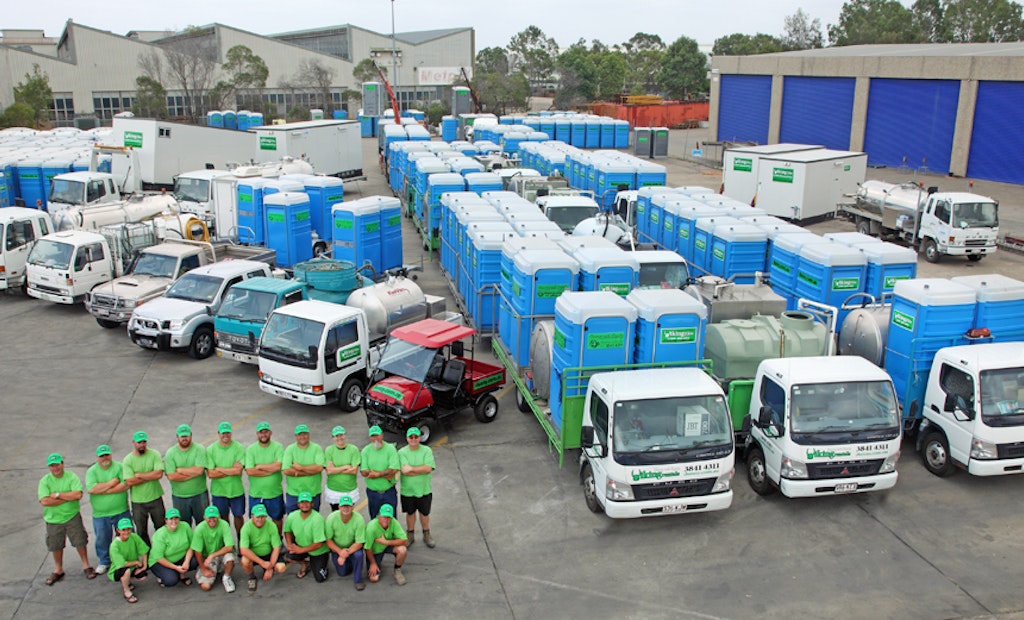
Interested in Education/Training?
Get Education/Training articles, news and videos right in your inbox! Sign up now.
Education/Training + Get AlertsA common dilemma in the portable sanitation industry is what to charge for services rendered. It’s such an issue that uttering the words “price increase” sends panic attacks into nervous owners fearful of losing business. That isn’t likely to change unless businesses start to think differently about the actual value and the perceived value of their products and services.
Often, competitors battling for market share compete on price alone. This is a practice teeming with unintended consequences, the subtlest being a lower perceived market value for products and services in the minds of consumers. However, a diminished perception of the worth of a company’s service/product is a road to shrinking profit margins, which leads to service shortcuts and ill-managed equipment. In short, undervaluing products and services puts companies on a downhill trajectory for competitive survival.
Whether you are in a market of low-priced competition or simply need to increase rates to remain profitable, a marketing strategy can help. Increasing prices without damaging one’s business must be a carefully managed process that includes a strategy for appealing to new customers while retaining existing ones.
Perception is everything
The value a consumer places upon goods and services influences the price that he or she is willing to pay. Consumers are largely unaware of the true cost of production for the products and services they buy. Instead, they simply rely upon personal feeling to determine how much certain products or services are worth to them. Unfortunately for portable sanitation companies, that internal gauge is quite often set too low for the services provided.
Companies that compete over price alone actually exacerbate the problem. In the absence of any other points of comparison, such as quality customer care, innovative products, or quality assurance, consumers assume price is all that matters and consequently seek the lowest price available. Operators who want to increase prices and sales must pursue marketing strategies to create a higher perceived value for their services.
Educate the customer
A carefully executed marketing strategy can change the value that a customer assigns to a service. To improve the perceived value of services, your company must educate customers on the unique benefits of doing business with you. Start by defining what separates your company from that of the competition. Be specific. Why should someone choose to do business with you? Those distinct benefits become the selling points for the marketing strategy. Perceived value increases when the customer feels those qualities are worth the higher price. This perception is a combination of tangible and intangible factors.
Let’s say for example that a supervisor on a construction job site needs to order a restroom facility for his crew. One option is a company that rents outhouses — the wooden structures with the little moon on the door and a 5-gallon bucket on the inside. In comparison, another company provides modern, ergonomic, polyethylene portable restrooms that are highly engineered to meet sanitary guidelines. In addition, the second company advertises a service guarantee. Both facilities serve the purpose of providing a sanitation facility for the crew. However, from a tangible standpoint, the crew will appreciate a clean facility, adequate capacity, and a more comfortable seat.
The modern equipment is innovative, safer, and provides a service guarantee, all of which increases the supervisor’s perceived value of the product. So many added benefits to choosing the second company’s equipment reduces the supervisor’s intangible fear of making a bad decision. He is willing to pay more for the modern facility not only because he believes his crew will appreciate a more dignified facility, but also because he’s confident it’s a good decision.
Using a perceived value pricing technique might seem somewhat arbitrary, but the idea is to align potential buyer’s perceived value of a product with its actual pricing. The technique greatly assists in the effective marketing of sanitation products. By educating consumers about the value of portable sanitation through both tangible (quality equipment, on-time delivery) and intangible benefits (service guarantee, stellar reputation), a company is able to influence customer thinking and perceived value.
Marketplace value
Though I doubt any companies currently try to deliver wooden outhouses, the exaggerated example of the modern equipment company beating out the competition is still relevant. The modern company understood its position in the marketplace and used that information to effectively evaluate its strategic options regarding prices.
Value in the marketplace can vary from region to region. Various factors, such as location, economic conditions, competition, availability of labor, and overall supply and demand may affect the actual costs to produce or deliver products and services.
Naturally, these factors will affect price offerings, too. For a company to deliver value to its customers, it also must consider its own reputation, staff representation, product benefits, and reliability as these qualities compare to that of the competition.
Price is then dependent upon value. Want to raise your price? Improve the value offered. The key to doing that is to give every customer a value-rich experience. Exceed a customer’s expectations by showing professionalism, providing outstanding service, and offering choices in equipment styles.
When a company caters to the needs of the client and ensures a good overall experience, it increases the perceived value and thus the client’s overall satisfaction with the transaction. Under those circumstances, price becomes less of a factor as clients pay for a service, a product, and an experience that they believe is worth every dollar.
If all sanitation companies in the industry make a commitment to understand market value, to educate consumers on the innovation in the industry and the health and safety benefits it has in our communities, and to communicate the value that portable sanitation provides, we could raise the perceived value of the industry, and thus of the very products and services that operators provide.
About the Author

Beverly Lewis runs a marketing agency, the Beverly Lewis Group, dedicated to helping small businesses with marketing solutions. Having served as the director of sales & marketing for two portable sanitation companies, her unique background combined with an expertise in marketing is well suited for the portable sanitation industry. She believes that a company’s image is represented in every aspect of the company.
She is an active member of the PSAI and was awarded the distinguished Sani-Award in 2008 for outstanding service. Contact Beverly at beverly@beverlylewisgroup.com or visit www.beverlylewisgroup.com.

How do you increase perceived value of your portable restroom business? Post a comment below.






